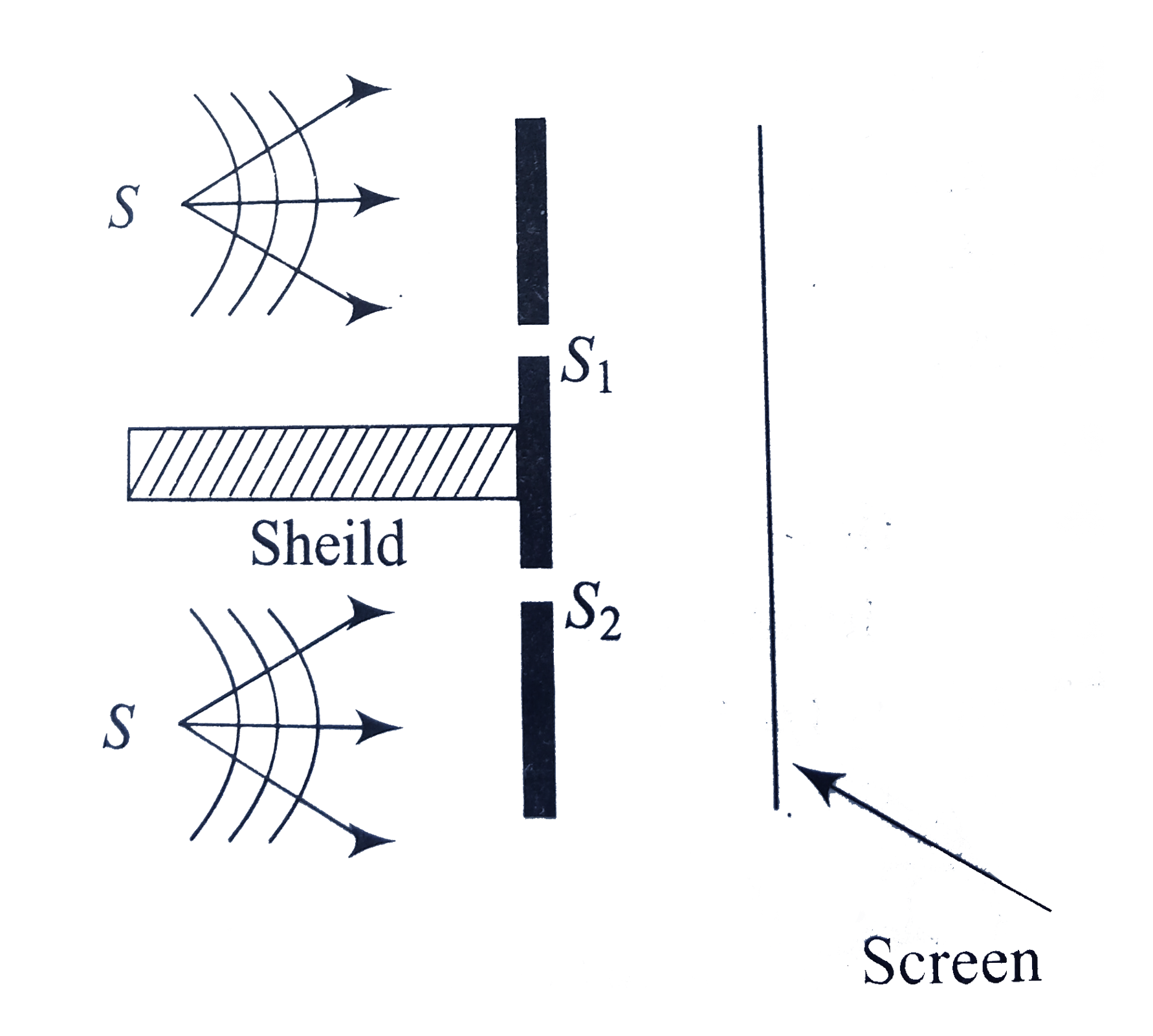What happens to the fringe pattern if in the path of one of the slits a glass plate which absorbs 50% energy is interposed?
The bright fringes become bright and dark fringes become darker
No fringes are observed
The fringe width decreases
None of the above
The correct Answer is:D
In normal Young's double slit apparatus,
and
When one of the slit is covered by a glass plate
Topper's Solved these Questions
- BOOK - DC PANDEY ENGLISHCHAPTER - WAVE OPTICSEXERCISE - taking it together47videos
WAVE OPTICS
- BOOK - DC PANDEY ENGLISHCHAPTER - WAVE OPTICSEXERCISE - Assertion reason8videos
WAVE OPTICS
- BOOK - DC PANDEY ENGLISHCHAPTER - WAVE OPTICSEXERCISE - For JEE Advanced E. Integer Type Questions13videos
WAVE OPTICS
- BOOK - DC PANDEY ENGLISHCHAPTER - SOLVED PAPERS 2018EXERCISE - JIPMER22videos
SOLVED PAPERS 2018
Similar Questions
Determine what happens to the double slits interference pattern if one of the slits is covered with a thin, transparent film whose thickness is λ2(μ−1), where λ is the wavelength of the incident light and mu is the index of refraction of the film.
View SolutionWhat happens to the interference pattern if the two slits in Young's experiment are illuminated by two independent sources such as two sodium lamps S and S' as shown in figure
 View Solution
View SolutionInterference pattern with Young's double slits 1.5mm apart are formed on a screen at a distance 1.5m from the plane of slits. In the path of the beam of one of the slits, a transparent film of 10 micron thickness and of refractive index 1.6 is interposed while in the path of the beam from the older slit a transparent film of 15 micron thickness and of refractive index 1.2 is interposed. Find the displacement of the fringe patten.
View SolutionA plate of thickness t made of a material of refractive index μ is placed in front of one of the slits in a double slit experiment. (a) Find the changes in the optical path due to introduction of the plate. (b) What should be the minimum thickness t which will make the intensity at the center of the fringe pattern zero ? Wavelength of the light used is λ. Neglect any absorption of light in the plate.
View SolutionIn a Young's double slit experiment minimum intensity is found to be non-zero. If one of the slits is covered by a transparent film which absorbs 10% of light energy passing through it, then
View SolutionA plate of thickness t made of a material of refractive index μ is placed in front of one of the slits in a double slit experiment. (a) Find the changes in he optical path due to introduction of the plate. (b) Wht should be the minimum thickness t which will make the intensity at the centre of the fringe pattern zero ? Wavelength of the light used is λ. Neglect any absorption of light in the plate.
View SolutionA plane monochromatic light wave falls normally on a diaphragm with two narrow slits separated by 2.5mm. The fringe pattern is formed on a screen 100 cm behind the diaphragm. By what distance will these fringes be displaced, when one of the slits is covered by a glass plate (μ=1.5) of thickness 10μm?
View SolutionIn a Young.s double slit experiment, the fringes are displaced by a distance x when a glass plate of refractive index 1.5 is introduced in the path of one of the beams. When this plate is replaced by another plate of same thickness, the shift of fringes is (3/2)x. The refractive index of second plate is
View SolutionIn Young's double slit experiment, the fringes are displaced index 1.5 is introduced in the path of one of the beams. When this plate in replaced by another plate of the same thickness, the shift of fringes is (3/2)x. The refractive index of the second plate is
View SolutionAssertion: The pattern and position of fringes always remain same even after the introduction of transparent medium in a path of one of the slit.
Reason: The central fringe is bright or dark is depend upon the initial phase difference between the two coherence sources.View Solution

